- Boat
- Articles
- About
- Tehani-li Logs
- 2004
- Uligan Maldives
- Man, Oh Man, Oman
- Eritrea: The Nicest Place You’ve Never Heard Of
- Cruising Notes: Oman to Eritrea – From Pirates to Cappucinos
- Old Testament Sudan
- Egypt: Legend, Myth and Reality
- Thoughts on Cruising the Red Sea
- Greece: Civilization Again
- Montenegro
- Malta
- Sardinia, Italy
- Barcelona, Spain
- 2003
- 2002
- 2001
- 2004
- Contact
Sailing to Alaska
The call of nature could be ignored no longer. A long dreamt of sabbatical from the salt mines of gainful employment was at hand. It was time to put the family on the sailboat and take off to Alaska.
I was fortunate that my employer had (perhaps rather rashly) agreed to a three month sabbatical earlier in the year. After confirming that I would still have a job when I returned, we spirited the children out of school early and began our voyage. For us freedom began June 1st when we finished provisioning the boat, putting gear, clothes and children aboard and then slipped away from the marina in Seattle to head north to Alaska. Three months and 4,000 miles later we have returned.
Our destination was the 49th state, to be sure, but more importantly our aim was also the journey itself. I was going to be without a Blackberry and virtually no email for the entire summer. In fact, cell phones were not going to be of any use either. Planning and executing an expedition like this with family takes a great deal of time and expense but the rewards I hoped would well exceed those exertions and it was a trade I was happy to make.
Our sailboat is an Oyster 53 built in New Zealand to English design. She is a cutter-rigged sloop, 53 feet long with a displacement of 25 tons. What that means is she is of relatively good pedigree and size and heavy enough to withstand rough weather. This is good because rough weather we had. My long-suffering wife, Ariel, and I christened her “Asmara Sky” (boats are always a “she” or “her” because in the owner’s eyes at least they are beautiful). She is named after our two daughters; Asmara, age seven and Adriana Sky, age four.
We live in Seattle, the capital of a region known as the Pacific Northwest. Named after an old Indian chief with a gift of making speeches, Seattle is a cosmopolitan city boasting wonderful scenery and a forward-looking, well-educated workforce. It is the home after all, of Microsoft, Amazon and Starbucks. More interestingly, Seattle sits on the doorstep of a sweeping wilderness beginning with the intricate and beautifully indented Canadian coastline of British Columbia and ending with Alaska perched above like a great glittering prize.
Alaska explodes with incomparable beauty. It cannot be compared to any place else. The mountains are higher, the streams and rivers are bluer, the fish and animals are greater in number and size and the people are fewer and farther between than anywhere you care to throw a dart at.
Alaska exceeds superlatives. It is wild; there are far more animals than the 700-odd thousand people who call the state home (some of whom are odd indeed and we will meet a few in due course). In the middle of the state standing proudly towers Mt. Denali, the tallest mountain on the continent while the coastline of Alaska is longer than that of all the other states in the US combined. Alaska is huge; it stretches halfway around the top of the globe from Canada across the frigid North Pacific all the way to Russia. With a total area of 663,268 square miles (1.7 million square kilometers), the state is even more vast than Mongolia, and if you glued France, Germany, Spain and the UK together better than the EU has you might equal it in area. With less than one person per square mile (vs. 662 for the tightly packed UK), Alaska is pretty much empty of human habitation and all that goes with it. Known to the rest of the country as “the Last Frontier” we were keen to see this wonder land in all its super natural glory.
Most tourists going to Alaska arrive by plane or, like us, by water. The waterborne tourist trade though, is circulated mostly through the protected channels and sounds of the southeast of the state on very controlled one week trips. Cruise ships 900 feet in length charge through the seas at 20 knots or more carrying between three to five thousand cash rich but time poor pampered paying passengers. These “balcony-laden floating condominiums” are a modern mode of travel whose convenience is exceeded only by its unreality. We desired to see Alaska, or a small part of the territory, under our own power and at our own pace. We went alone and we went by sail.
My wife and I had experienced some of the joys and woes and the highs and lows of long distance sailing right after getting married when for our honeymoon we sailed our previous boat from Asia to Spain. That trip lasted three years (the honeymoon continues). This however, was the first time we were venturing across the seas and into the dangerous North Pacific with two small children aboard and we were not altogether sure what to expect.
While I said the journey was the goal, rather than a specific destination – and the journey was indeed spectacular – we really wanted to visit areas of Alaska that tourists rarely frequent. Having worked one season many moons ago as a particularly unsuccessful commercial fisherman on Kodiak Island, I had always wanted to return to this beautiful place. It was reassuring when we got there to see the island was still beautiful and alas, I was still a lousy fisherman.
To reach Alaska by water from Seattle one first has to cross from south to north the Canadian province of British Columbia. This we did, wending our way 600 miles through deep channels and between, around, under and over, thousands of islands small and large. Blanketed in pine and spruce trees, the islands are green jewels scattered as if by a careless hand among the blue waters of the jagged and wave-battered Canadian coastline.
Leaving Seattle June 1st meant we were early in the season up north and virtually had the place to ourselves. Well, that may be an exaggeration; we had to share the water with eagles, seals, dolphins and countless humpback whales. As we passed by the rocky beaches that line the islands and waterways of BC I was constantly “glassing” for bears with the binoculars. I saw many rocks that looked like bears which gave me a jolt, “Bear!” I shout. But no, it was just another Canadian rock. I was confident, however, that eventually one of those rocks would move and ten days into the trip I spied from afar a big shiny black rock – just the size of bear – which lifted its head and stared at me.
As we progressed further north the place names began to change from English to those of native tongues. We anchored in fifty feet of water with a mud bottom in a nice bay off the channel with the melodious name of “Kxngeal Inlet.” I am guessing it is melodious because neither I nor anyone I have met has the foggiest idea of how to pronounce it.
For the journey north the weather could only be described as “wet.” It rained lightly every day and the accompanying mist hung just above the water like a floating fluffy blanket. Sometimes the mist silently drifted out of our way and sometimes we motored into it and watched visibility drop to a few hundred feet. The soaring mountains vanished and then all that we could see were just the rocky sides of the channel. It didn’t matter though as I kept a close watch on our radar screen and peered at the water ahead with my fogged up binoculars, scanning for ships, logs and bears.
A day spent in economically depressed Prince Rupert (and the hometown of comedian Bill Murray) was enough so we left Canada, having wandered 590 miles so far and sailed over the border toward Alaska. Our first stop was 91 miles away: Ketchikan. Modestly calling itself “The Salmon Capital of World,” Ketchikan seemed like a big city to us with float planes landing and taking off, jet aircraft screaming down the runway across from the harbor, cars and trucks roaring along the roads and houses, with people and cruise ships all piled high. We couldn’t wait to leave.
A couple of days later and now two weeks into the trip we arrived in Sitka with its Russian Orthodox church, walkable downtown and what we learned was seemingly everyone’s favorite SE Alaskan town. Planted on the edge of mountainous Baranof Island, Sitka bravely faces the North Pacific and was to be our jumping off point to cross the feared Gulf of Alaska, a nasty stretch of water that keeps most people happily shore bound. We spent a week here resting and provisioning for the 600 mile passage which would take us well out of sight of land. This crossing was to be the first for the girls and I was curious to see what they would think. Our destination, Kodiak Island, is located in the middle of the gulf just below the Alaskan Peninsula surrounded by rough water and to get there takes a little effort. I know that effort will be repaid. Ariel, my long-suffering and often seasick wife, is less sure.
With the weak rays of the sun just penetrating the morning darkness, a 4:30 AM departure saw us moving out of Sitka through the light rain and fog, or what Alaskans call “liquid sunshine.” We had waited for a weather window of uncommon easterly winds to help push us across the gulf and now was our moment. The winds were easterly but the sky was gray, the seas bouncy and the crew uncomfortable. As land faded away into nothingness I heard the ubiquitous sports fishing boats chatter on the VHF radio, “Pole Dancer, Pole Dancer, this is Top Gun. Do you copy?” Blissfully ignorant of what a pole dancer really is the girls didn’t seem to notice there was no land anymore and this never concerned them the entire three day passage.
The winds picked up at night as so often is the case on passage and we had twenty knots of cold blasts blowing astern making it rougher and “rolly-er.” Wearing six or seven layers of clothing, wool gloves and a wool hat, I spent the days and nights in the cockpit navigating, steering via the autopilot and watching for any errant ships out here. We saw nobody. Even the whales had disappeared. It was just us in our little bouncing home tiptoeing our way across the face of the vast ocean. By morning on the second day we had completed 383 miles with only 169 to go.
We arrived in Kodiak town at 0830 to a beautiful sunny day. Total passage distance: 575 nautical miles covered in 75.5 hours at an average speed of 7.6 knots. Despite some upset tummies (as can be seen in the photo on the right) it was a tolerable effort.
The Kodiak archipelago is formed by steep emerald green volcanic mountains which break through the cold seas and glow in shafts of sunlight that cut through the normally heavy cloud cover. The snow-capped peaks arise from black sand beaches which receive the constant attentions of rolling or crashing waves depending on tide and weather. Two-thirds of the island belongs to the Kodiak Bear National Wildlife Refuge where development is not allowed and the bears are free to scarf salmon, deer and the odd tourist at their leisure. The sea in and around the island is bursting with plankton and small fishes. Attracted to such rich feeding grounds since time began is the wonderful salmon. They return each year after journeys of thousands of miles at sea – to where they go we still do not know – and magically return to the very stream of their birth in summer to lay eggs and begin the cycle anew. This massive migration of piscatorial protein is the reason the bears on the island are the largest in the world. Kodiak Island is wild, it is unspoiled and it is unforgettable.
Isolated from other bear species since the last ice age, Kodiak brown bears are a unique subspecies of grizzly and only recently have taxonomists agreed to classify them separately as “brown bears.” This mainly has to do with their size as they are much larger than your garden variety grizzly bear (which I always thought was pretty big to start with). Kodiak brown bears can crush the scales at 1,500 pounds and stand up to 10 feet tall; they can also run as fast as a horse. Clearly this is an animal whose bad side you do not want to be on.
Scientists believe the Kodiak brown bear has an IQ level higher than a dog and may be close to that of a primate. When I worked in Kodiak one summer as a shiftless youth I heard many bear stories from the locals, including from an older Native American guy, Ronnie, who worked on the same fishing boat. He grew up with the bears in the wildlife refuge and told me over and over again, “Those bears are smart. You never want to mess with them.”
(He also said, “Derek, whadya do if you see a bear swimming across the bay?”
“Gee, Ronnie, I don’t know.”
“You get in the skiff, go behind him and jam an oar up his ass!”).
The northern part of Kodiak is heavily forested by dark green spruce trees while the southern half of the island is bare and consists of green mountains capped with snow carpeted in lush verdant grass and patches of alder. They call Kodiak “The Emerald Isle” and wherever you look you see green mountains majestically sweeping down to meet the dark blue ocean. This grass and alder cover is so dense that one can’t just walk through it. Often the grass is as tall as a man and one feels a sense of claustrophobia when wading into it. So dense does it grow a 1,500 pound bone-mauling bear could be two feet away and you wouldn’t know it. Keep in mind the bear does know you are there.
Ronnie told me that the Indians hunted the bear in pairs because it will circle back on you and hunter becomes the hunted. I remember him telling me when this happens,
“One guy has the gun, a big one, ready to fire. The other guy takes some twigs in his hands and slowly breaks them and stops, beaks them and stops. You see, the bear will only move when you move and every time your buddy is breaking twigs in his hands the bear is moving closer to you. When he finally charges through the brush you fire. You only get one shot.”
I had thought long and hard about taking my family here and with my two young daughters and walking these deserted beaches where such animals lived. Yeah, it was worth it.
Kodiak town is a working town if there ever was one. It is the kind of town where men wear baseball caps that say “CAT” in restaurants and women sometimes wear memorial T-shirts for ships that went down – and other women come over and thank them for wearing it. The reason to go to Kodiak however, was to get out of town and experience the island’s savage hinterland.
We had a boat and were going to do just that. We decided a circumnavigation of the island would be a good start. Aside from bears, two animals that are everywhere in Kodiak are the sea otter and puffins. Both are cute and non-threatening and we never got tired of watching them and their antics on the water.
Sea otters in particular seem almost human in the way they play with and raise their young. They are also one of the few mammals that use tools to gather food. Every time we approached one in the boat Mr. or Mrs. Otter would stop what they were doing on the surface and pop up to look at us with a surprised almost indignant expression as if to say, “What are you doing here?” With their expressive brown eyes, long whiskers and distinguished grey muzzles sea otters always looked to me like a startled English gentleman. These beautiful animals were hunted almost to extinction for their fine pelts by the Russians who were the first Europeans here but numbers have since recovered all over the archipelago.
Our first day of the circumnavigation began July 1 and we timed the tide to pass through Whale Passage so as to avoid having to buck a 5 knot current. Along the way we saw rafts of sea otters. (Flocks of seagulls, parliaments of owls – yes, it’s true – and rafts of otters). Some let us get within twenty feet before giving us an irritated look and diving under water in an instant.
The first anchorage I chose and 57 miles out of Kodiak town was the disturbingly named “Terror Bay.”
“What is it with all these names?” my long-suffering, prone to seasickness and now concerned wife, Ariel asked me.
“What do you mean?”
“Look,” she continued, “here we are in ‘Terror Bay,’ before that it was the ‘Grief Islands’ and then there was ‘Sorrow Bay…’ What’s with this place? Why can’t there be happy names?”
She was right. Place names in Alaska were either native in origin; “Cape Unalishagvak,”, for instance or another mouthful, “Ikpikpuk River,” geographically descriptive; “Alligator Island,” named after someone, such as “Bainbridge Glacier” or emotive, such as “Clubbing Rocks,” “Danger Bay,” “Deadman Island,” ”Hazard Point,” “Hells Hole,” “Massacre Bay,” (seriously, who wants to take their kids there?), “Murder Point,” “Peril Strait,” “Shotgun Cove,” “Ford’s Terror,” “Paralysis Point,” “Poison Cove,” “Shipwreck Point,” “Slaughter Island,” and finally the scarily named, “The Eye Opener.”
Basically, I had no answer to her other than travel by sea up here is perilous and funky.
We survived Terror Bay at the end of Uganik Passage, in fact it was amazingly quiet and the only sound was that of birdsong. The bottom was mud and the anchor held like glue which meant we slept peacefully all night. The next morning we upped the 110 pound hook and moved on to Mush Bay. This is where we had our first brown bear sighting.
We took the dinghy ashore and walked along the beach. The girls love collecting shells and pretty soon after about a half mile we had a bagful. I kept scanning the tall grass and alder with binoculars for animal life when I spotted something orange-brown in color. I froze. I looked again. It was a bear and then two more appeared out of the brush, slightly smaller than the first. Wow. We had a mama bear and her two cubs. The “cubs” were my size and mama was much, much bigger.
They were coming our way through the grass about a half mile away. I looked at the dinghy and I looked at the bears. We were exactly midpoint between the two. “OK, girls. Let’s go back to the boat…” Ariel and Asmara saw the bears too and we all felt a thrill of momentarily being displaced from the top of the food chain as we stood, unprotected, on the ground with these massive creatures.
After moving the crew down the beach carefully to the dinghy we clambered aboard feeling instantly safer and took off for Packers Spit. This mile long strip of land stretches out from shore and is covered in hip-high grass with a dilapidated and abandoned house falling apart in the middle. The girls wanted to do more shell collecting and I wanted to walk the beach.
I had been here before when there was another house then, more like a shack, in which this crazy guy named “Coyote” lived. Packer’s Spit is a completely windswept wasteland in the middle of nowhere yet this guy against all odds eked out some sort of existence here fishing and hiding from giant bears. His shack was built from pieces of plywood and driftwood found on the beach. I remember opening the rickety door and looking inside when Coyote wasn’t there and you could see through the cracks in the driftwood walls. Inside wasn’t that much more protected than outside and it reminded me of one of the three little pigs who built a house of sticks. The little pig’s house didn’t hold up very well when the wolf came along. Coyote in the end didn’t fare much better.
I told Ariel the story. As I said this guy was nuts and if he wasn’t nuts then living there in that windblown hell-hole tipped him over the edge. One dark night he got into his skiff and motored across the water to a fish camp and tried to get into the caretaker’s cabin. The problem was the caretaker was inside. Coyote, the story goes, kept pounding on the door – with an ax – trying to get in. So the caretaker shot him through the door. End of Coyote. End of story.
Leaving Packers Spit we took the dinghy five miles across Uganik Bay to the fish camp where my boat was based that summer so many years ago. Ariel had baked some of her famous chocolate chip cookies for the guy who was staying there now whom we had been told about. He was an old bachelor that lived alone keeping an eye on the place and she thought he might appreciate some home cooking.
The house I remembered from that summer long ago had burned down but the shed and the dock I had helped build were still standing. We met the old caretaker and were told he had just shot a bear right where we were standing a few weeks ago. He lived in a small one room cabin on the property and was very nice.
He seemed to really appreciate the cookies. After an idyllic afternoon of wandering around and picking tiny but oh-so-sweet wild strawberries we said goodbye, climbed back into the dink and headed back to the boat. As we motored across the bay I told Ariel, “That was the guy who shot Coyote.”
A few days later in the evening at another anchorage a fishing boat pulled up beside us. The gruff looking captain leaned out the doghouse and asked if we wanted any fish. He then directed his crew to filet a fresh caught salmon for us. One of the crew handed it to me along with a book of poetry – poetry the captain wrote. It turns out Dave Densmore is a well-known poet in the area and I thoroughly enjoyed his book, “Another Look.” Where else do people just give you fresh fish and poetry? Only in Alaska.
Making our way to the bottom of the island we were invited to dinner at a fish camp. One of the guys at the camp was a 40-year resident of Kodiak and told me a story:
“We got boocoo bears here on the island. Jeez, one time I had come up to the cabin with a new crewman and about $2,000 worth of groceries for the season. Some bear had ripped into the cabin while I was gone in town and let me tell you, a bear really does a lot of damage when they get into a cabin. The place was a mess and ‘course all the food was eaten. We cleaned it up but we had a three-day opener the next day and I knew that damn bear would be back while we were gone. I didn’t want that but didn’t see what I could do about it.
Around 4 AM that night I heard some scratching at the back of the cabin and grabbed my shotgun to go look and see. As I walk through the doorway in the hall the barrel of the gun over my shoulder scraped on the door frame, the scratching stopped and I saw through the kitchen window that damn bear take off. He was a young bear and a male. I didn’t have time to open the window so I shouldered the gun and fired a slug right through it. Hit the bear in the spine where I was aiming but he kept going. I turned around to run out the front door and get him.
My new crew was lying on the couch and this guy had just met me only three days ago. He’s lying there and I’m running straight at him ‘cuz the door is right at the foot of the couch. Mind you, he’s woken up with me firing a shotgun inside the house, looks up and sees me shouting and running at him as I pump another round into the barrel. He just grabbed the covers and hid under them shaking like a leaf as I roared by. I ran outside and finished off that bear with a slug to the back of the head.”
On living in a national wildlife refuge and the legality of shooting a bear:
“You can shoot a bear when it’s a DLP – ‘Defense of Life and Property.’ But then the hassles begin. Fish and Game will be all over you if you report it and will pester you for years afterward. Most folks around here don’t ever want to shoot a bear but when they have to they just sink him.”
“Sink him?”
“Yeah, tow him in the skiff to deep water.”
“Well, how do you get him to sink?”
“Rock necklace, slit open the belly. How else would you do it?”
“Uh, I don’t know.”
We choose nice anchorages or they choose us, I don’t know. Every place we stopped for the night we had to ourselves. Surrounded by miles of wilderness in a warm embrace with untouched mountains soaring to the clouds on three we settled down to another wonderful evening. Daylight breaks and I am up to watch the fish jump and maybe spot a bear walking the beach. Those fish are smart or at least they have outsmarted me and all my expensive fishing gear newly purchased in Seattle. Asmara loves fishing with me even though we almost never catch anything worth keeping. She stands on deck swathed in her bulky lifejacket holding her little three foot purple girls fishing rod jigging patiently up and down, up and down. “Daddy, are we going to catch a fish tonight?”
In one of the many “activity books” her mother brought on the boat to keep her occupied Asmara took a little quiz and was absorbing the results. “Daddy, it says here I am an ‘Outdoor girl.’” I couldn’t be happier.
We left Kodiak after our 500 mile circumnavigation and sailed across the notoriously rough Shelikof Strait to get to Kukak Bay on the Alaska Peninsula where there are no towns and the bears roam free. We spent a week exploring completely secluded anchorages and from the safety of the boat enjoyed observing grizzlies patrol the beaches at low tide (we only went ashore at high tide and left the beach to its rightful owners once the water started to move out).
As we motored out of Kukak Bay in the early morning we spied another sailboat coming in! This was a treat. It turned out to be Didier and Sophie on “Sauvage Expeditions” whom we had met back in St. Paul Harbor, Kodiak. They run an expedition support vessel, a massive 60 foot steel ship that Didier built himself with a retractable 10 foot centerboard. They spend a lot of time in Antarctica shuttling scientists and mountaineers around. This summer they were taking a party of middle-aged French people along the Alaska Peninsula and as they approached we saw them with another six people on board.
“Hello! Sophie, Didier, how’s it going?” I shout as our boats come within a few yards of each other. Bow to bow we both stop in the flat water.
“Good, good!” Sophie smiles and shouts back as Didier waves. The guests are in the cockpit staring at us and taking pictures as Asmara and Adriana come outside in their pink pajamas to see who we are talking to.
Knowing they are working and don’t have time to chat I keep it short and ask them about their last anchorage which they had told me about back in Kodiak.
“How was Geographic Harbor? Bears?”
“It was GREAT!” Sophie gushes in her French accent. “We saw two of them COP-U-LATING!” Whether she was talking about her guests or the bears I did not ask.
The next destination was Homer, a former hippie hamlet now turning into a “destination” for those from the big smoke of Anchorage. I had old friends there we drank beer with and we passed 10 days relaxing before our next passage. We had now sailed 2,000 miles in two months. I was becoming slightly concerned we still had to get home and only had one month to do it.
Prince William Sound was just 250 miles away but it turned out to be a rough passage with wind on the nose no matter our course and almost steady rain and fog. PWS is familiar to non-Alaskans as the place of the Exxon Valdez disaster of 1989 which spilled “around” 11 million gallons of crude oil into these pristine waters. The Exxon Valdez smashed into well-marked Bligh Reef because the ship was OUTSIDE defined shipping lanes AT NIGHT, and their radar was BROKEN. Even today 24 years later in Cordova, the town nearest the accident, locals still drive around with “Boycott Exxon” bumper stickers on their beat up trucks.
We enjoyed a week in Cordova visiting another friend, Kim, a woman originally from Cleveland, Ohio who has been fishing Prince William Sound on her own boat for two decades. After saying our goodbyes we took TGS “Asmara Sky” back into the sound to find a secluded anchorage to wait for a break in the weather. We waited a week… On the afternoon before our departure the hammering rain and howling wind finally stopped and we took the girls ashore for the first time in almost seven days. They were happy to hunt for shells and eat berries while I looked for bears and watched salmon jump out of the water. I saw huge schools of fish amassing below the little brook we were standing next to. I thought I was looking at the bottom of the bay but the rocks themselves kept undulating and changing color. It was simply a school of about a million salmon. Quite a few of them were trying to make their way up the brook and I called the girls over to watch this natural phenomena.
After salmon spawn in the stream of their birth they die. Their rotting bodies not only provide food for innumerable gulls and bears but also for the fry, their children, which hatch in the spring. As a parent I thought I could understand that kind of sacrifice.
They were humpy salmon and we let them go but it was a thrill to catch fish like that. No humpies were harmed in this exercise.
As we continued our journey back to Seattle we enjoyed the company of 8-10 whales feeding in Laredo Channel, BC. They were not humpbacks but perhaps minke. Conditions were good and I took many photos. The fluid grace of these hugely powerful animals is evident as their glossy mermaid tails curve up out of the calm water. Following a lazy arc the tail glides further up and with unbroken motion follows the arc down below the surface with nary a ripple. They are sublime creatures.
We spent a very quiet night in Green Island anchorage, Fish Egg Inlet. The notes from my log express my thoughts at that moment:
“Early morning all is still and quiet. The water is glass reflecting perfectly the trees and rocks on the shore upon its mirror-like surface. A couple of old and bumpy logs have slowly drifted into the anchorage, half submerged they look like Nile crocodiles quietly eyeing us. Everyone sleeps and as I read down below I can hear the powerful exhalations of a whale feeding in the sound just beyond the little islands and screen of green spruce that separate us. Magic.”
The further south we get in Canada the more boats and people we encounter. Boats are everywhere and the anchorages are crowded with people always in a hurry. This is a big change from the peace and serenity we enjoyed in Alaska. Civilization, I think; I’m not sure it’s a good idea.
Two days later we arrived safe and sound back to our slip in Shilshole Marina, Seattle. We had sailed almost 4,000 miles over the last three months and saw incredible wildlife, stunning natural beauty, and got to know interesting people from other walks of life you wouldn’t ordinarily meet.
Nietzsche once observed,
“The end of a melody is not its goal: but nonetheless, had the melody not reached its end it would not have reached its goal either.”
We had reached our goal and our home port. They were one and the same. It was a wonderful summer.

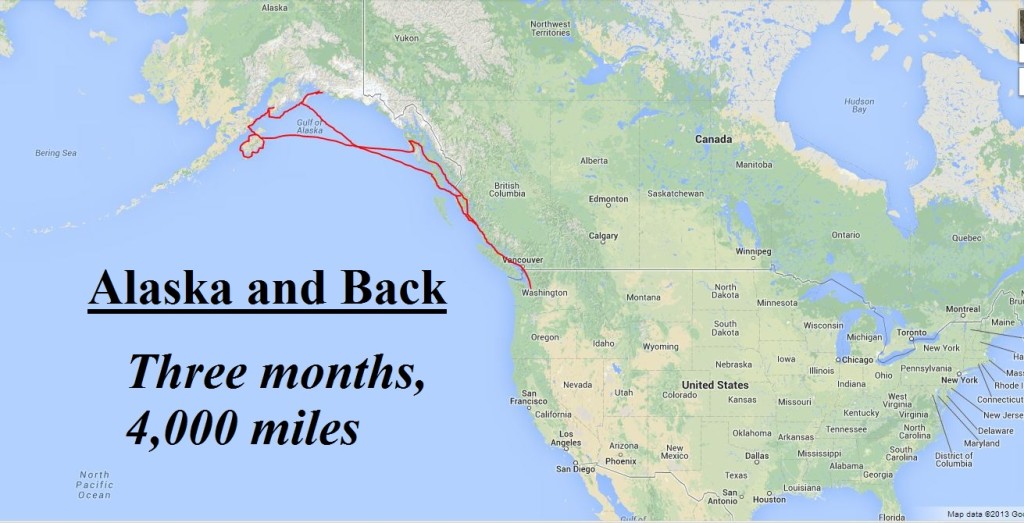
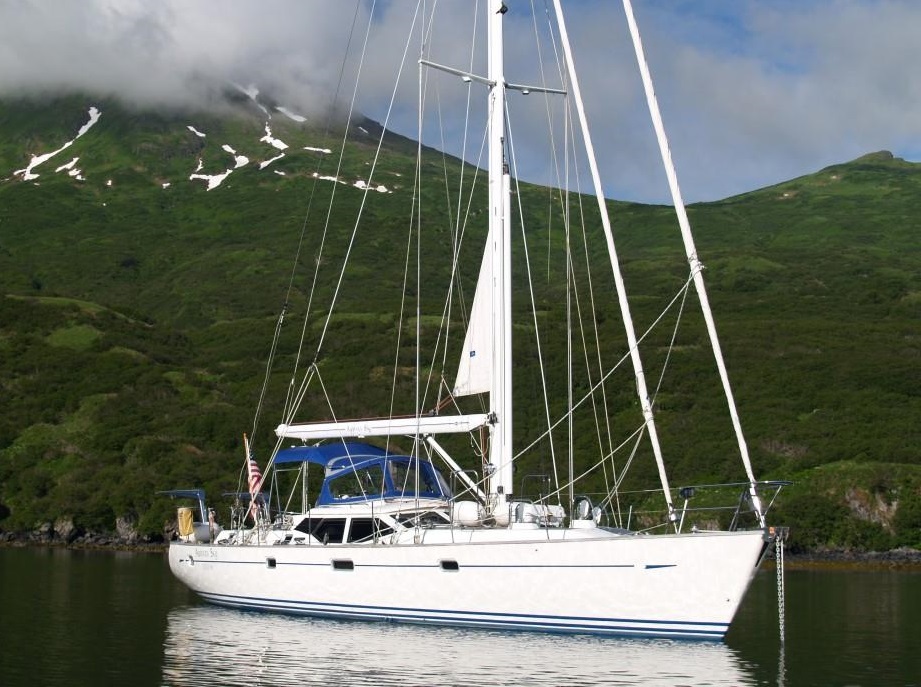

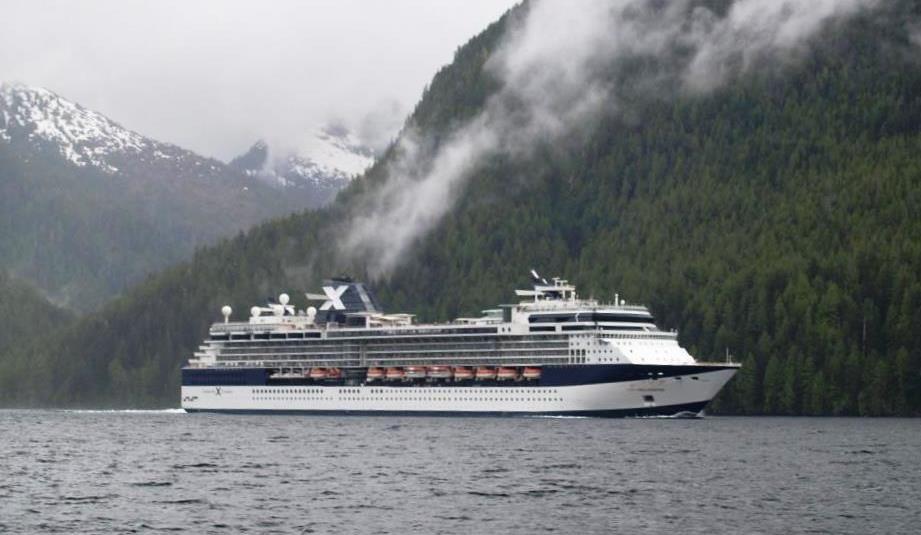
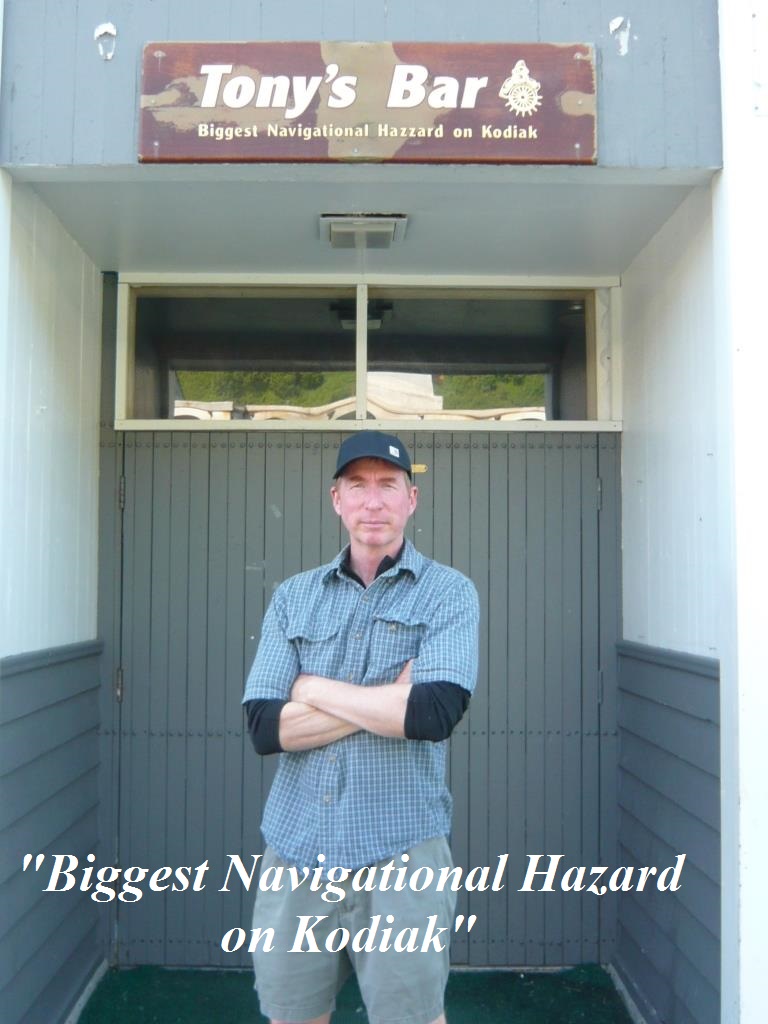
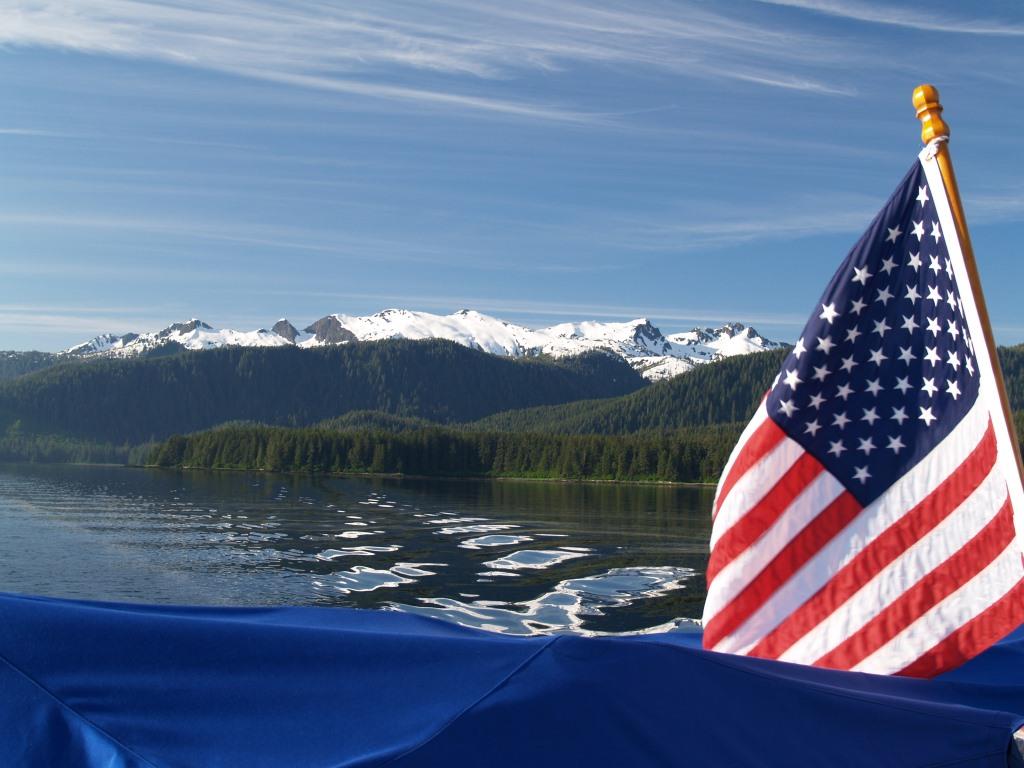
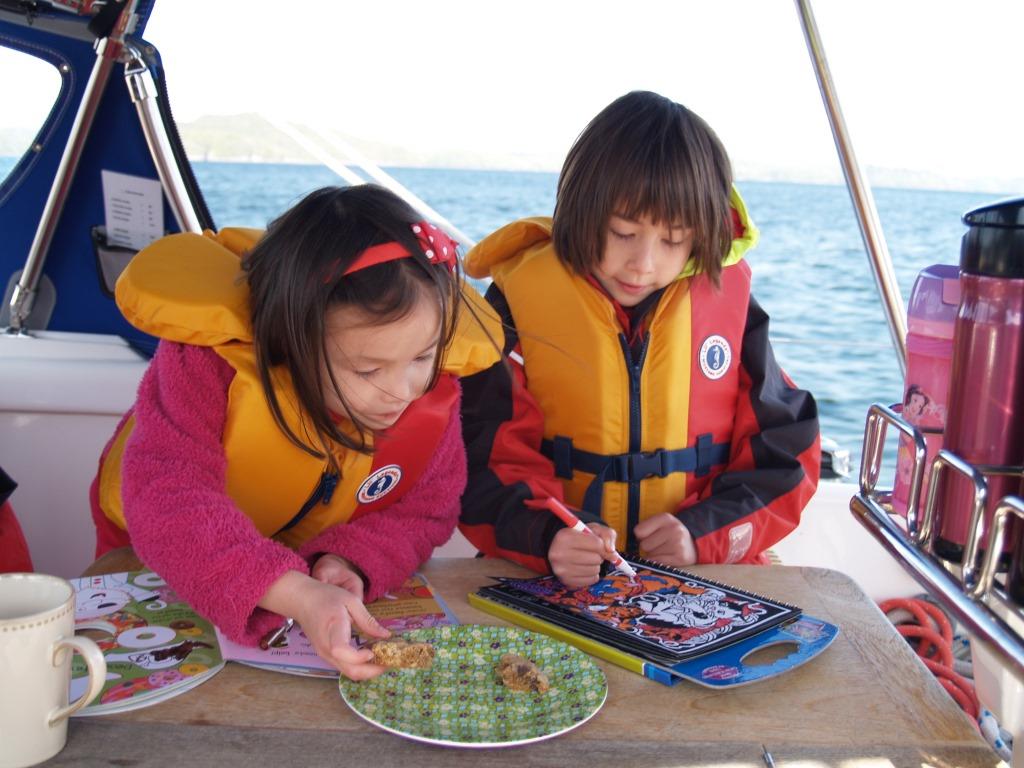
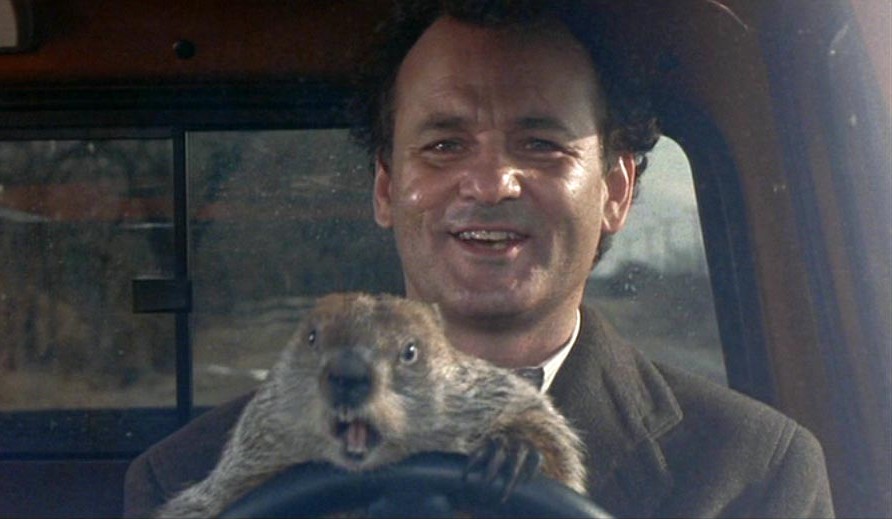
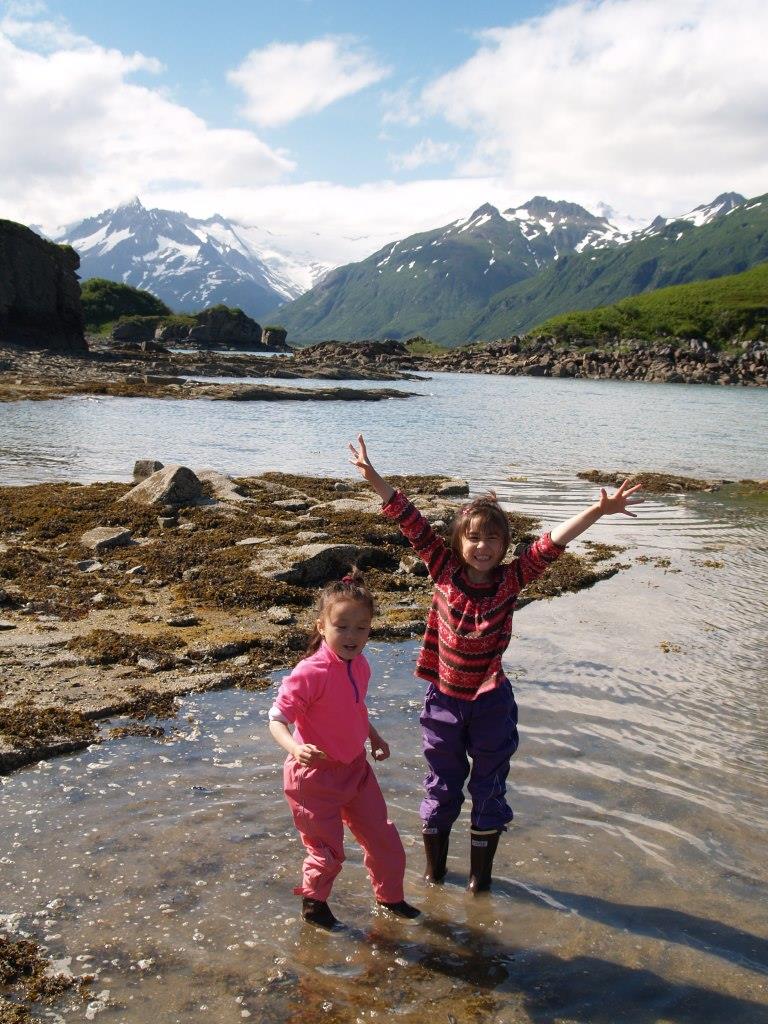
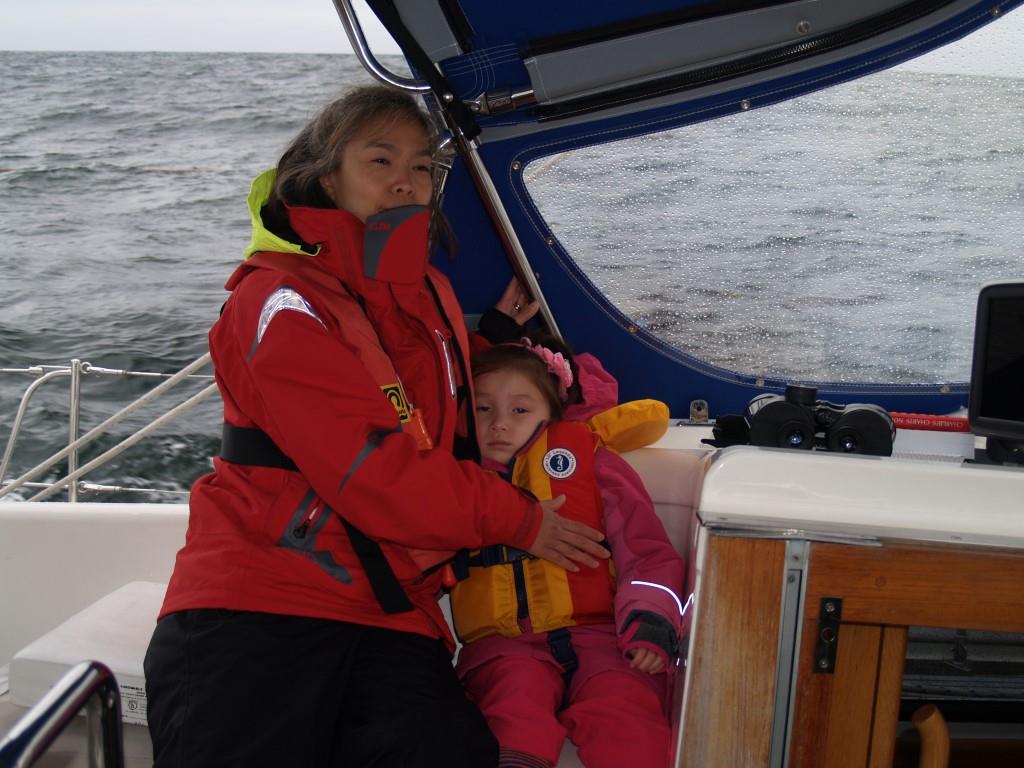
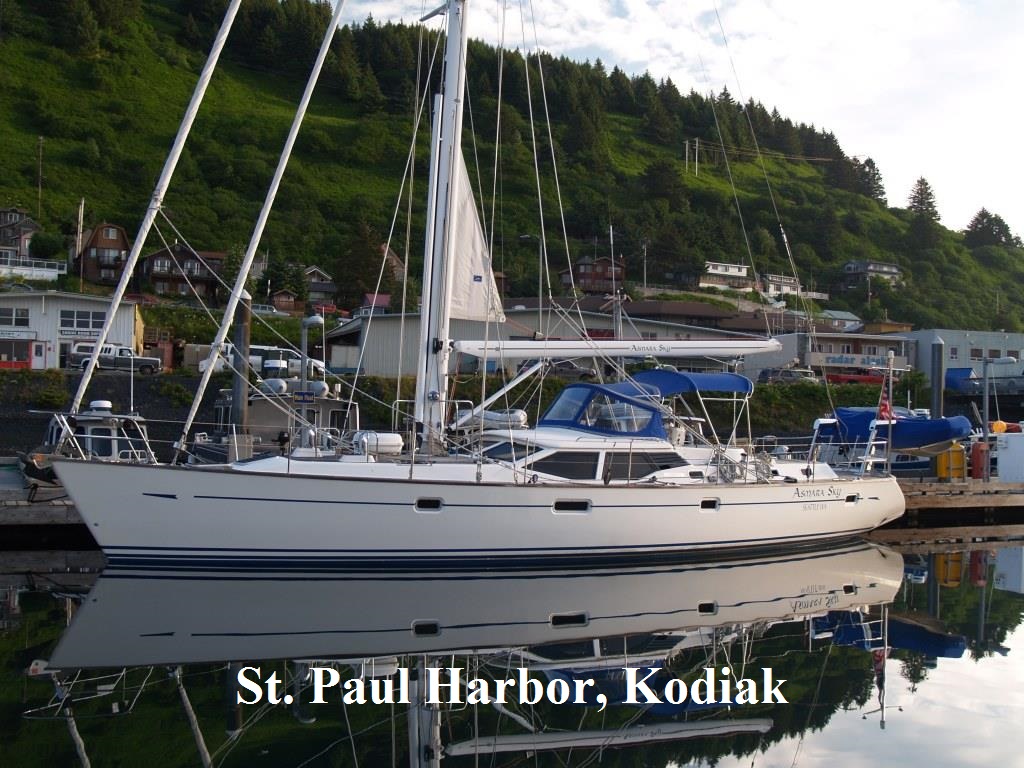
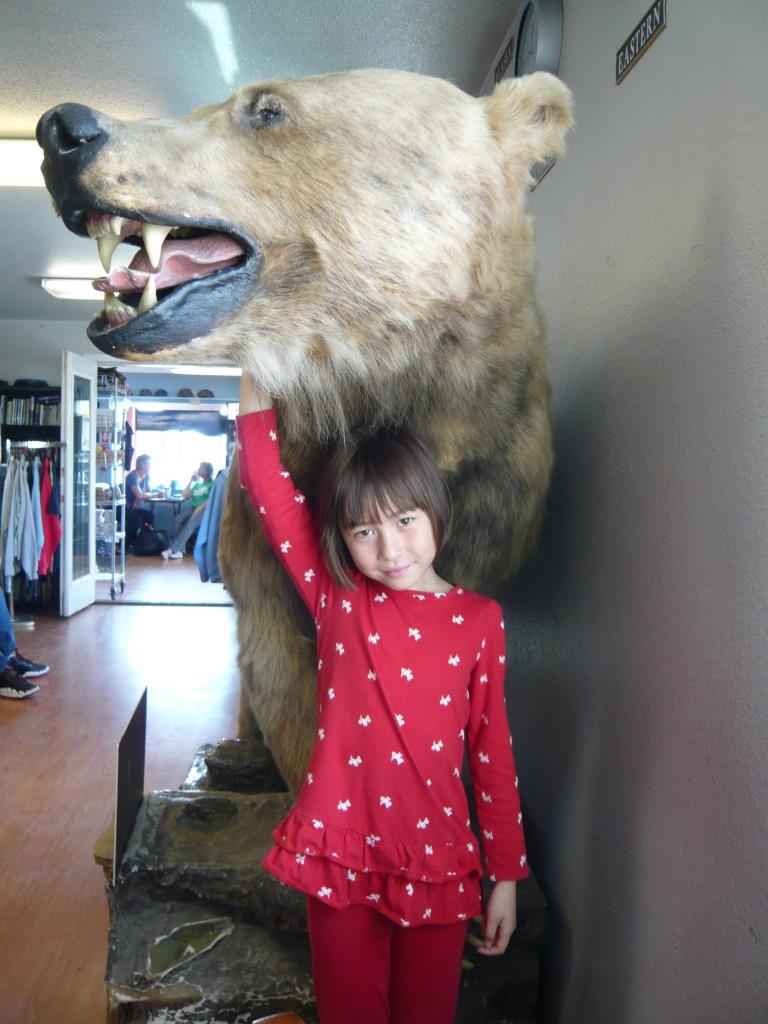

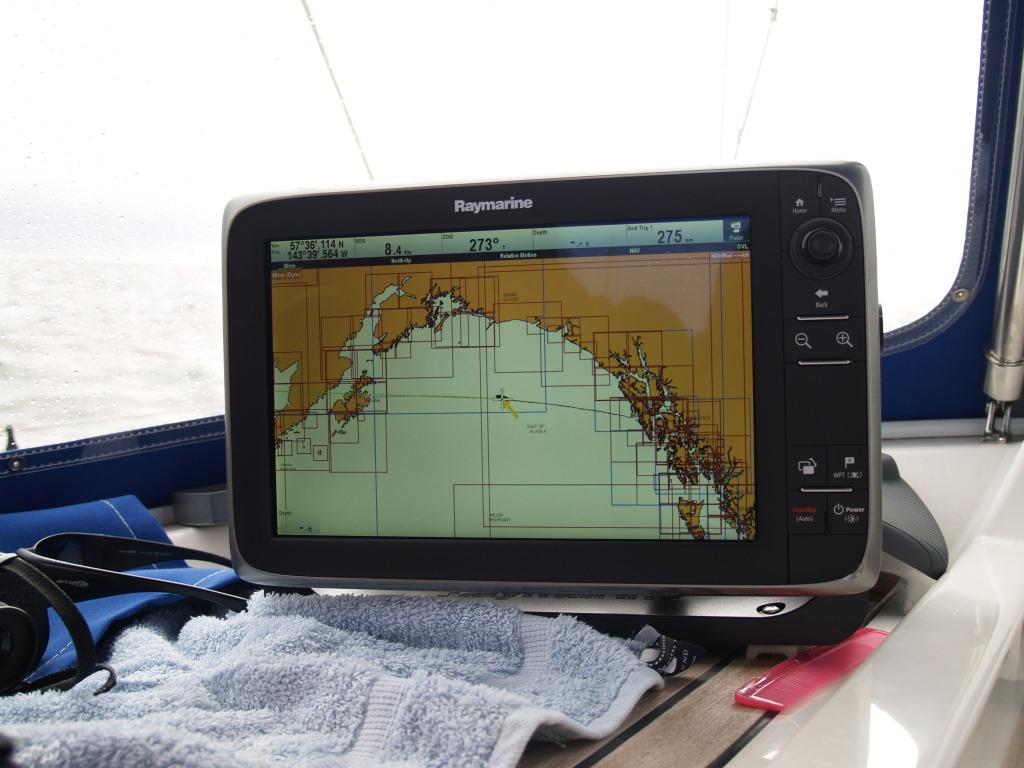
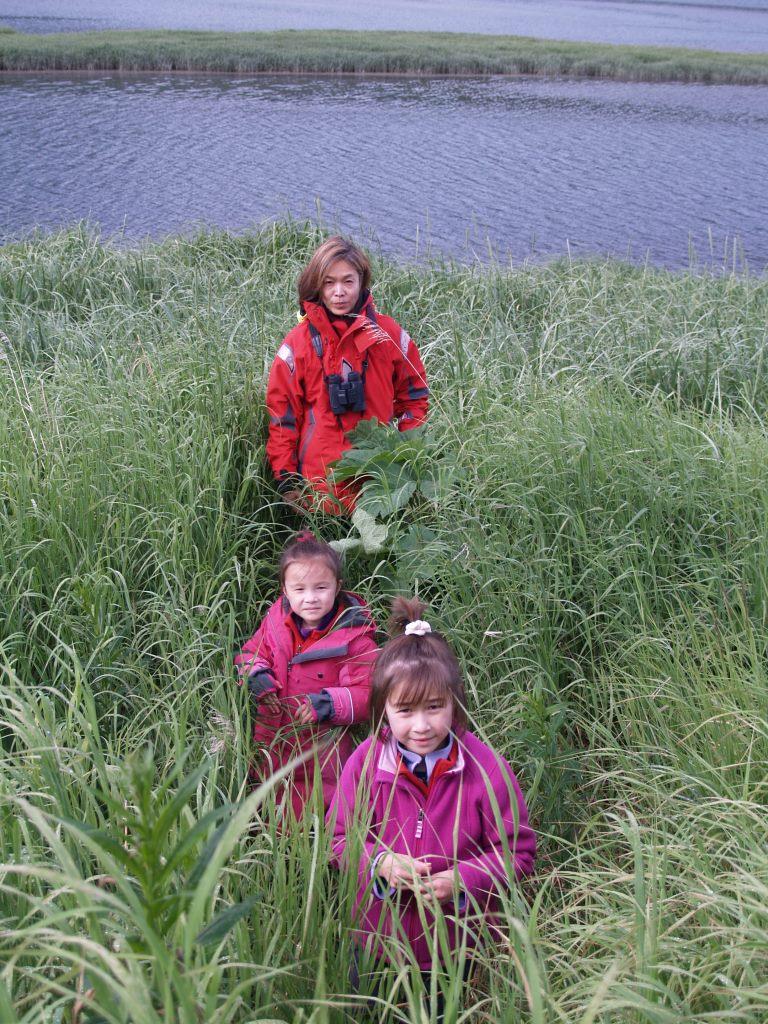
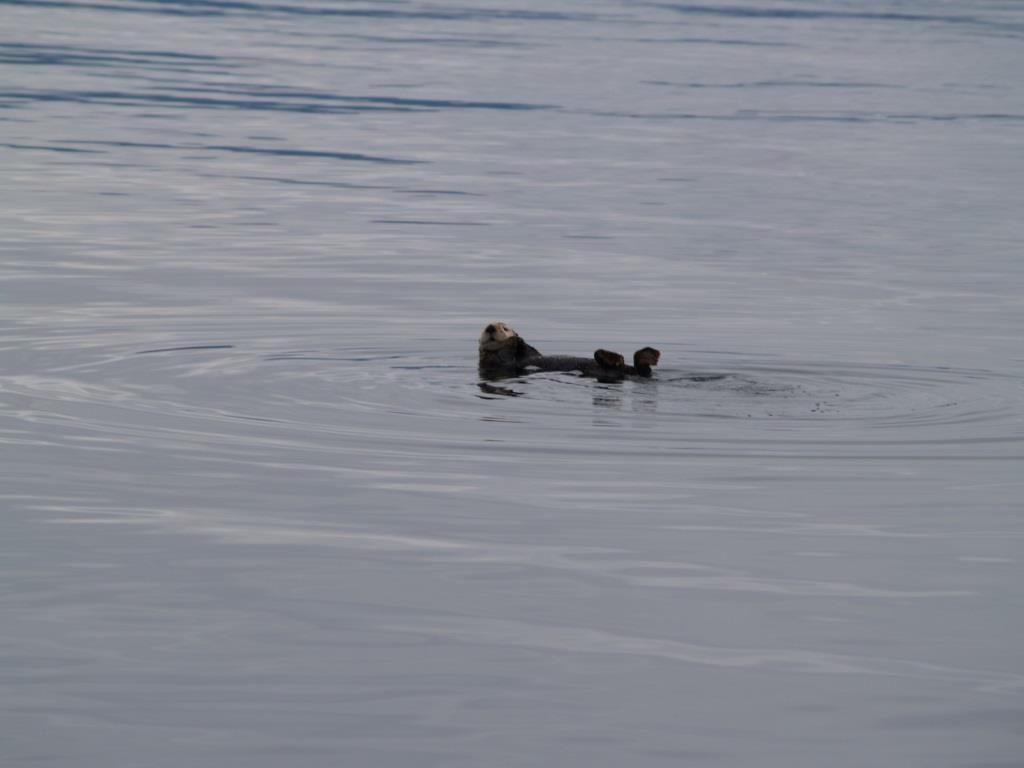
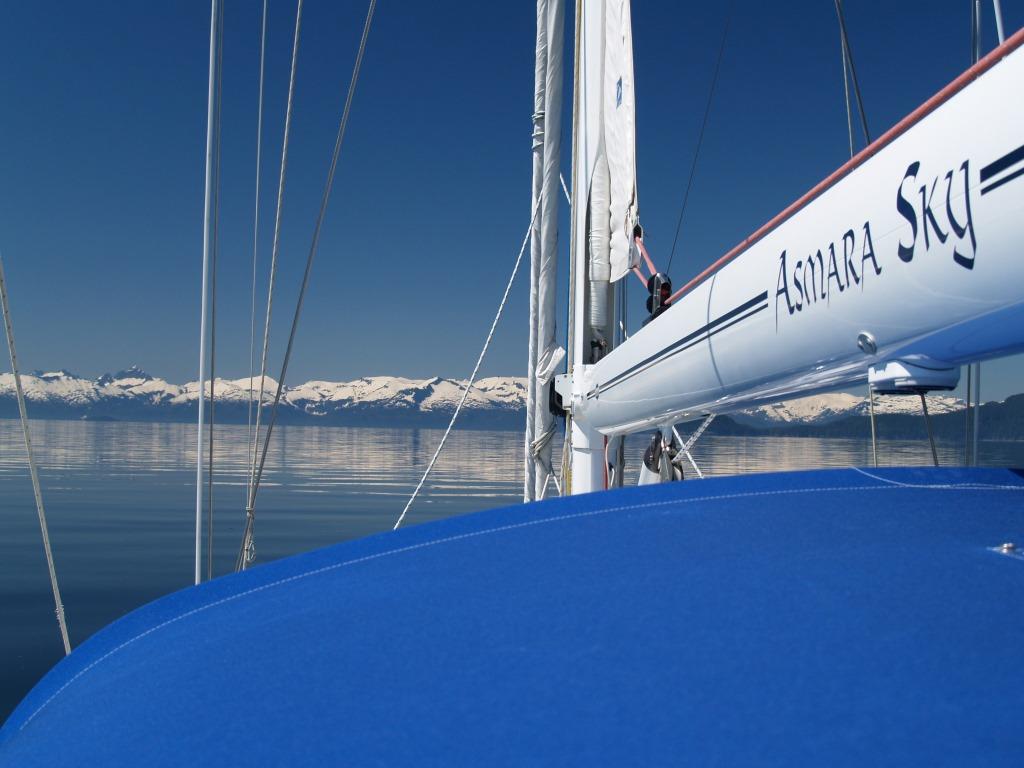
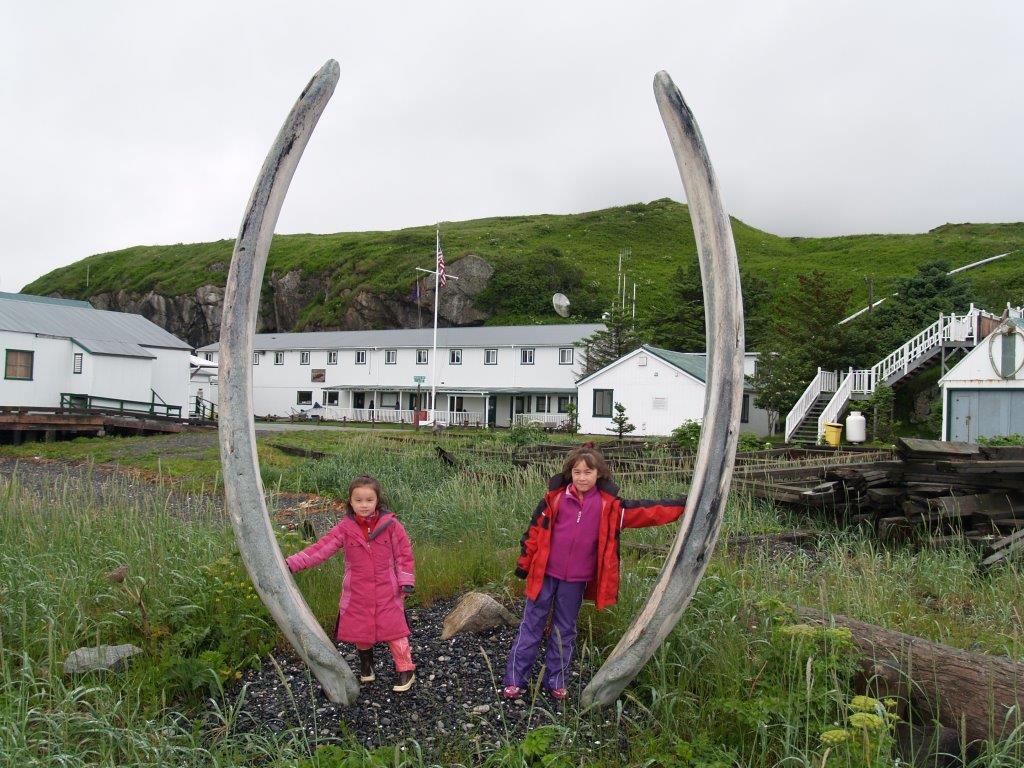
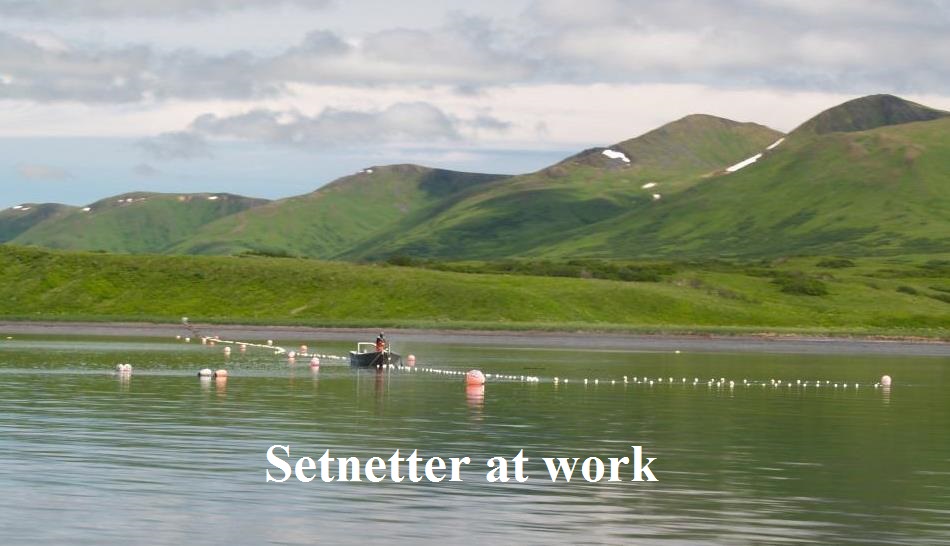
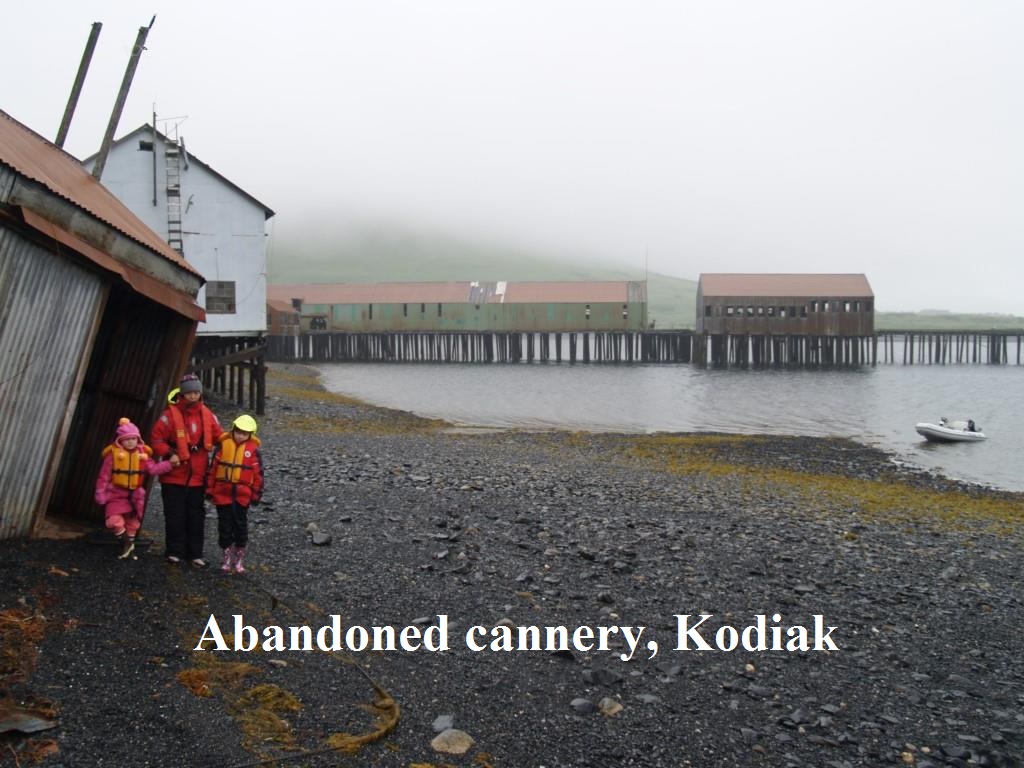

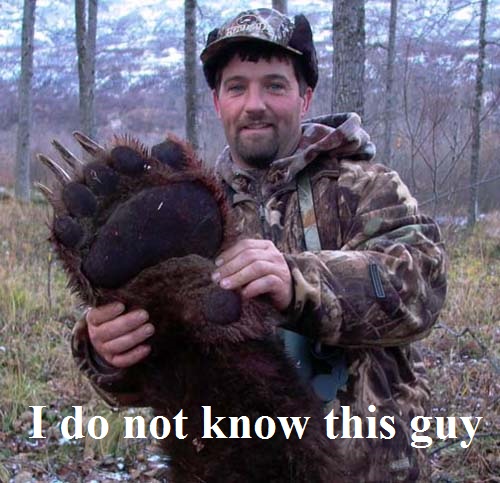
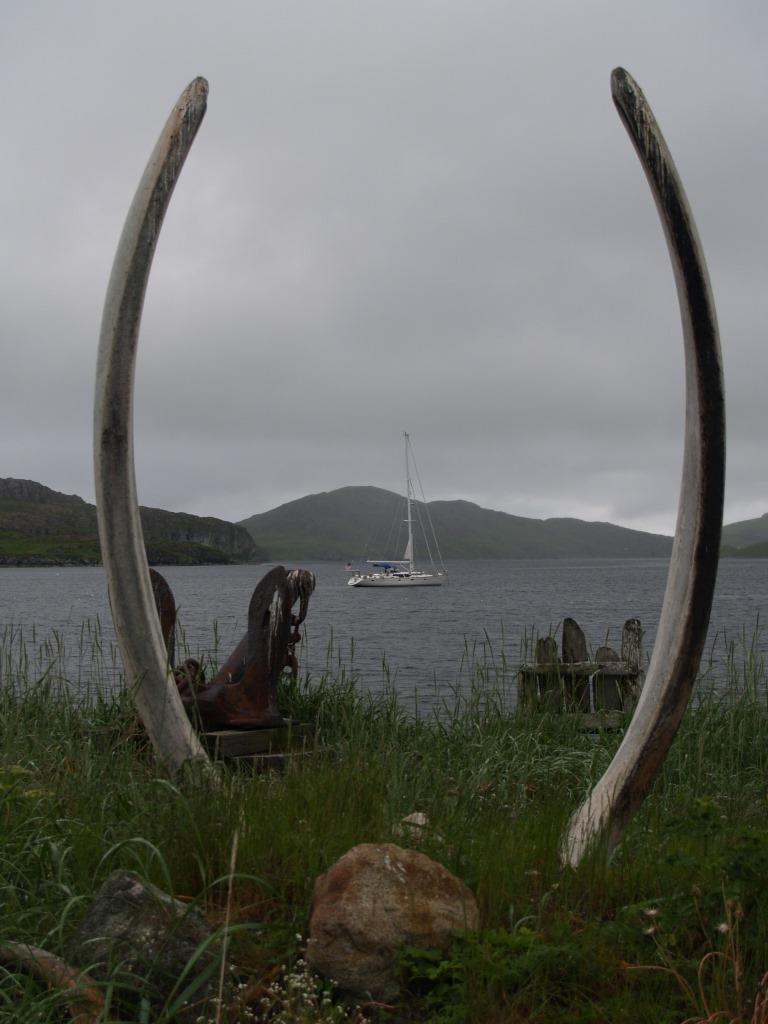
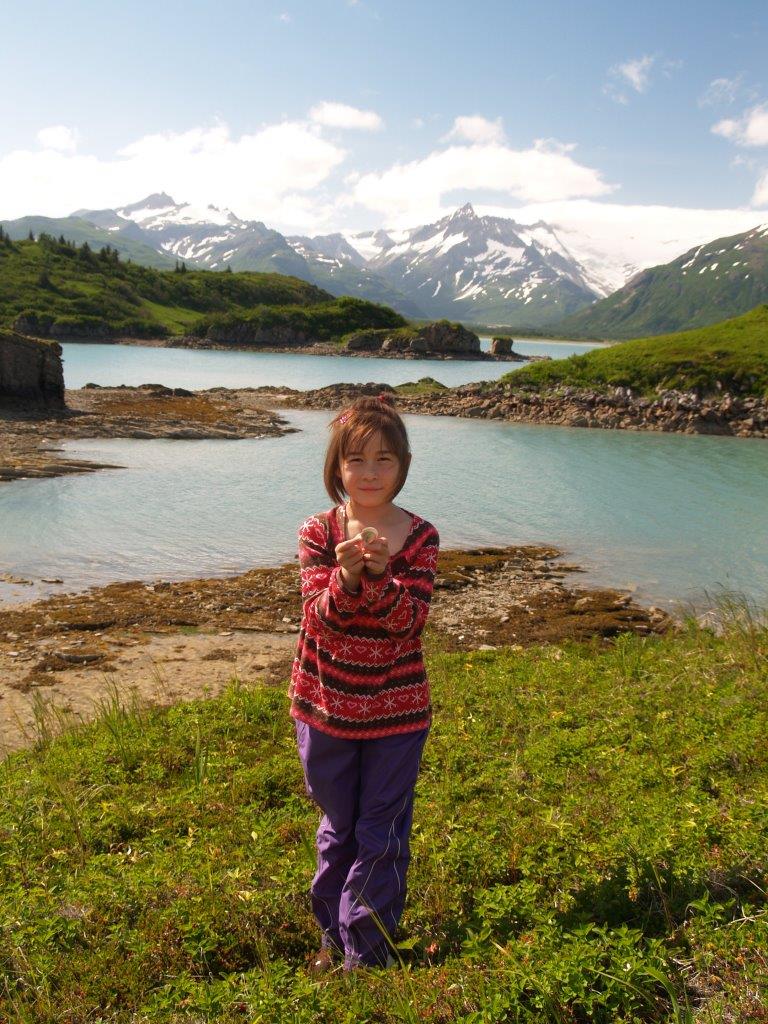
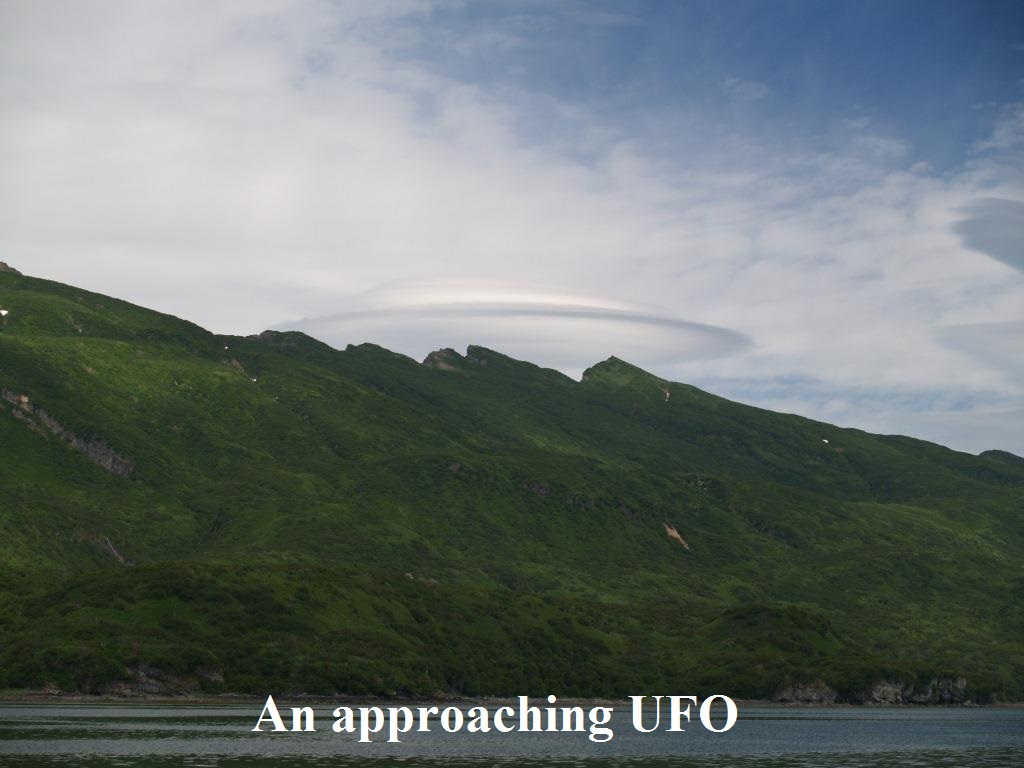
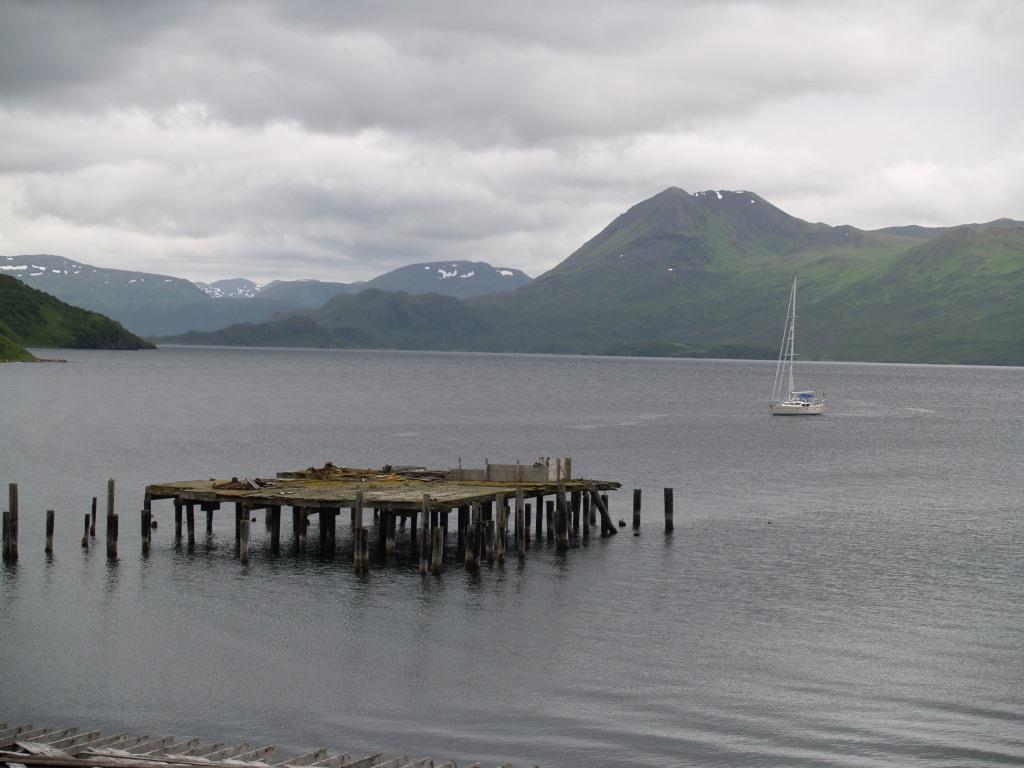
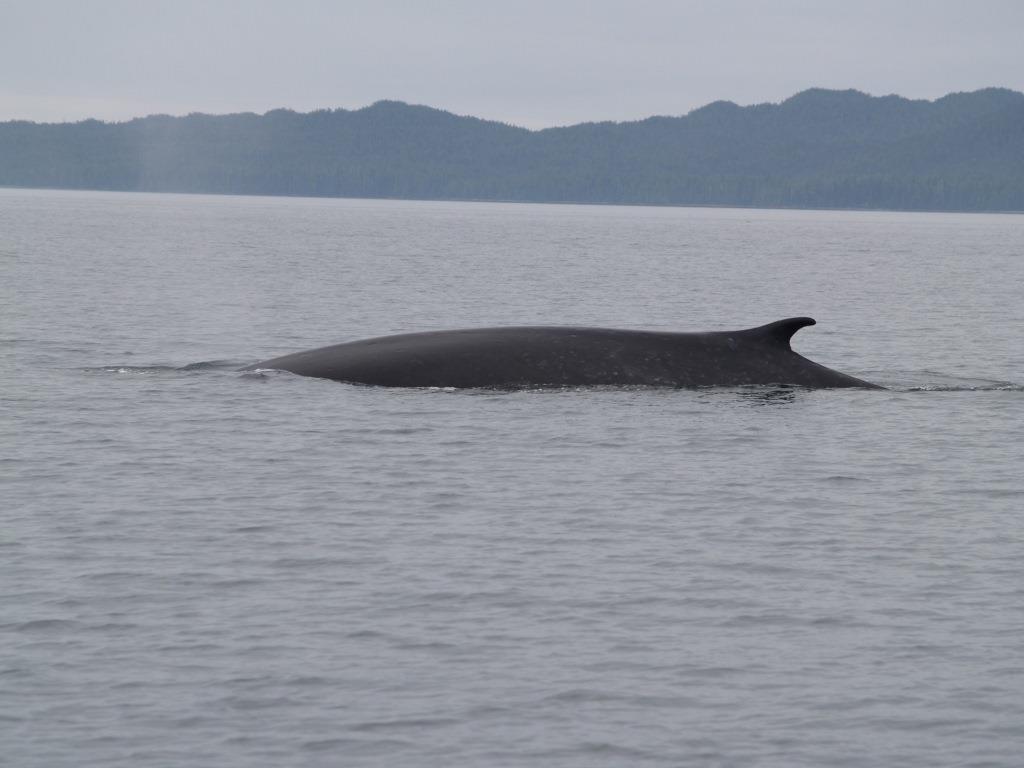
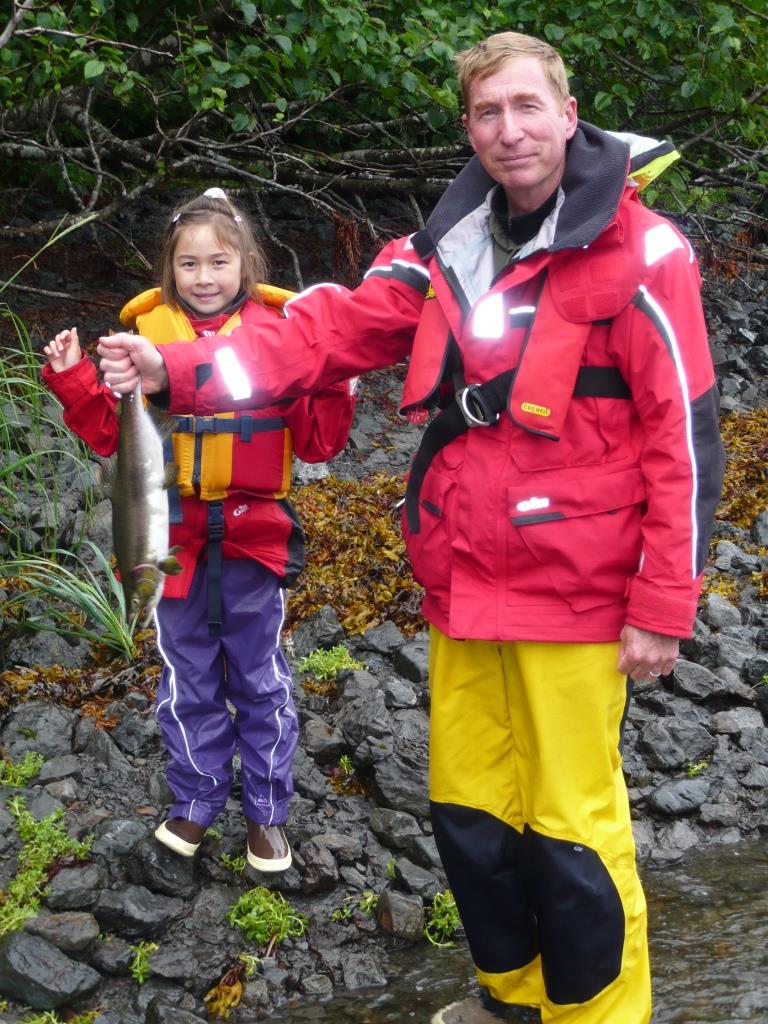
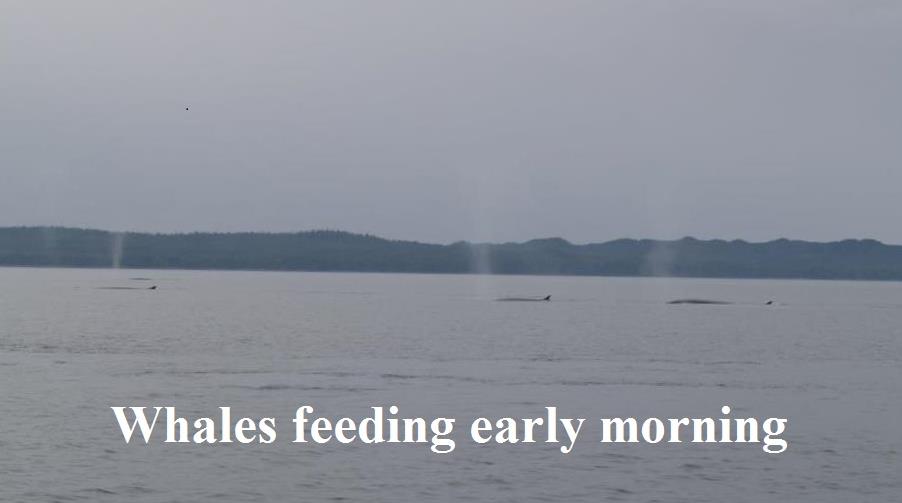
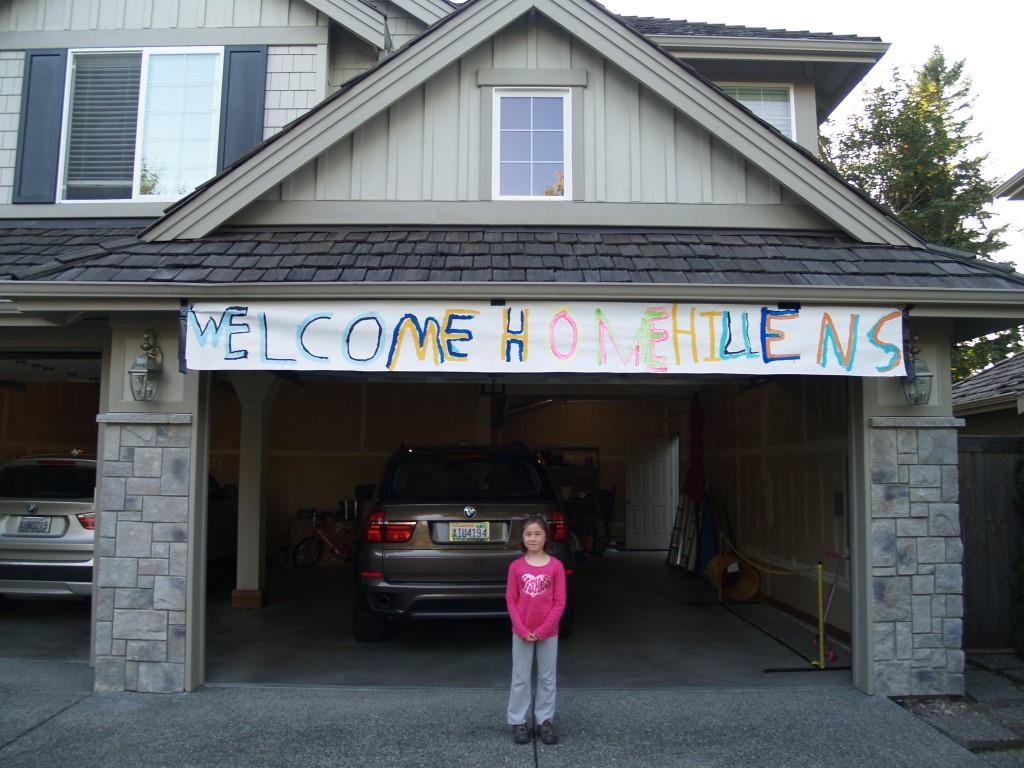

November 6, 2016
12:06 am #comment-1
Hi, i really enjoyed reading about your sailing trips. We have sail extensively around the pacific and would like to do the trip up to Alaska one day before the sun sets on our sailing carers. So it was good to get some more detail about that part of the world.
Thanks
Mike
November 10, 2016
1:32 am #comment-2
Mike,
Alaska is the greatest and least known cruising ground in the world in my view. Let me know if you have any specific questions I can help with.
Cheers.
Derek